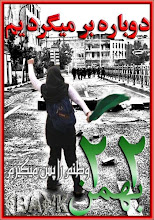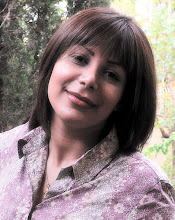Introduction
The wobbly brown pot, once much prized by aficionados of domestic studio tableware, has more or less departed. It has yielded to the prevalence of the wobbly white pot. If this is starting to sound like an investigation of the dominance of the grey squirrel over the red, well it’s not dissimilar. Time was when wobbly domestic pots were brown, stoneware and made in rural studios and industrial pots were white, straight, and made in urban factories. Now they’re all playing musical chairs and it’s a struggle to keep up, taxonomically speaking, with who’s doing what, where and why. Still Alive
The condition of the British Ceramics Industry looks terminal and needs a revolution in design, in working practices and, above all, in the attitude of management and marketing to survive. There are numerous graduates of ceramics and / or design courses, many of whom are skilled in the kind of craft and design needed for industrial production or collaboration, but many, I suspect will end up working in either Germany or Scandinavia. Both Origin and the British Ceramics Biennial, (BCB), indicate that, although the making of tableware is not the dominant discourse in ceramic practice anymore, it is alive and well and there are many who work steadily producing ware that has that distinctively hand-made, uniquely studio look which is still immensely appealing to many of us – to me anyway. Feral Parrots: Urban and Rural
To wit: Stoke on Trent, once the beating heart of the industry, has become small-town and quasi-rural – it’s certainly poor enough to count as rural and it’s the only place I’ve ever found where the ATMs dispense the money in fivers. Moreover, if the BCB, which it hosted at the end of 2009, is anything to go by, then it’s rapidly becoming more ‘studio’ (rural), and less ‘industrial,’ (urban). To confuse matters further, urban sophisticates now like to buy hand-made ware from urban studios, classed, by ‘The C Word; as ‘Terraced Industry.’ The latter now replaces the old ‘cottage industry,’ and those distant rural lands, once the home of the original, ‘cottage’ industries, have instead become home to an interesting clutch of quite exotic, almost colourful, stoneware makers, urban migrants to rural settlements who, like feral parrots, produce what Debbie Joy calls, ‘urban rustic.’ Step forward: Claudia Lis, James and Tilla Waters, Nick Membery, and Debbie Joy herself.
Claudia Lis with her work at Origin 2009
Parrots in Flight
Almost colourful – Lis’ work is very very sleek, almost-shiny-but-not-quite stoneware in a huge variety of luminous greys – ah yes, but not ‘Camberwell greys,’ forget Alison Britton, Lis makes grey into a highly complex colour. Think Corot and his 20 tones and you’ll be nearer the mark. J and T Waters also produce sleek stoneware for domestic use, also in colours, - a tad prim perhaps – but then urban stuff always is – that, after all, is what ‘urban’ means, now I come to think of it. Membery’s stoneware is a good tough colour and unbelievably well thrown. It’s what happened when stoneware, in the 60s and 70s sense of the word, went contemporary. He sells in kitchen shops – swanky ones, and you can buy on line too. It’s sort of butch but with added colour, definitely not prim, and it’s for POSH urban kitchens whose inhabitants want to look like they spend their summers in rural France and changed the colour scheme to blue, to remind them of the blue blue sky and the Med. When I say posh though, it’s not at all expensive. It’s brilliant value and looks fabulous. Debbie Joy makes a stoneware and porcelain mix, much chunkier than the work of the other four, but she dips it in glazes which look exactly like Italian ice-cream – there’s green, pink, blue and yellow - and then puts little bugs on in transfers. The overall effect is edible, child-friendly, and gorgeous.James and Tilla Waters: Origin 2009
It’s interesting to note that none of these five makers are living or working in England now. Three are in Wales and one in Scotland. Studio rents are considerably cheaper and both Scotland and Wales take an enlightened view of supporting ‘rural ‘industries.’ (sic)
A Tale of Three Cities
Back in England, meanwhile, Chester and Bristol - which is almost Liverpool and Bristol - each have a domestic tableware potter: Rachel Holian and Hanne Rysgaard. Liverpool, Bristol and London were the three cities which hosted the development of blue and white ‘delftware’ pottery, particularly tea sets, in response to the expansion in commodities, - tea, coffee, chocolate and sugar – in the 18th Century. These two ‘heritage’ cities probably support more than one tableware maker each but these are the two whose work I’ve encountered. Both might be considered, ‘rustic urban,’ urban in essence but with a rustic tilt, rather than, as with Joy’s work, rustic in essence but with concession to urban desires. They reference industrial ware – it’s white and uses transfers and has much added colour, but the work is hand-made, complete with the all-important wobble. It seems apt that these cities, inheritors of innovation in tableware, should now be supporting the same.
Left: Hanne Rysgaard's milk carton and bottle jugs and wincyette teapots
Holian says she has difficulty selling in Chester itself. It’s very much a tourist town and a county town for horsey types who, in my experience, want either an ‘authentic’ wobbly brown rural pot for their chunky, stripped pine, kitchen table, or a proper Spode or Wedgwood dinner service for the mahogany dining table. The sort of bisexual, transnational, bi-lingual smart-ass stuff that Holian makes demands a slightly more, dare I say it, aesthetically heightened consciousness. She sells in Liverpool instead. The same is true of Hanne Rysgaard’s work. Rysgaard’s forms much more obviously reference industrial production – the carton jug is a fine example, but similar reference can be found throughout, from lustre rims on the ‘china-ware’ through to the teapot that looks like a reshaped winceyette nightie.
Terraced Industry: The Theory
So, if the ‘uban-ware’ is made in the Scottish and Welsh mountains and the ‘trans-ware’ in middle England, what’s happening in London? The clue is in the first paragraph. While the uban potters have migrated to the countryside, the rural potters are thriving in the heart of the metropolis. Akiko Hirai, Kaori Tatebayashi, Sophie MacCarthy, Linda Bloomfield, Chris Keenan, Louisa Taylor, all form a part of the complex of Terraced industries which can be found in all manner of side streets and olde cobbled courtyards across London. Two more – John Butler and Yo Thom have scuppered this neat little theory by escaping the city and settling in rural areas – although, to be fair – both are users of wood kilns so, arguably, need the extra space and appropriate planning laws which will accommodate such equipment. John Butler is a lesser-spotted maker of proper, warm toasty brown, wobbly wood fired pots. Yo Thom’s work is tawny in essence, but she has indigo tendencies, and her tableware, though splendidly wonky, has a little chic urban touch to it.
Terraced Industry: Who’s Who
In the urban terraced, classic studio model, The Chocolate Factory N16, which really was a chocolate factory and now has a courtyard, geraniums and studio cat, you can find the great-crested Sophie MacCarthy who makes elegant patterned table ware, stupendously well thrown and turned, (the latter is a rare thing these days) and Akiko Hirai – a gas kiln user, who dwells in a twilight cave of a studio and makes magnificently glazed stoneware which the cat treads on from time to time, adding new and unexpected wobbles to the plates. Linda Bloomfield works in shed at the bottom of the garden in Chiswick, and makes ‘rural pottery’ in every sense, except that it’s all pink underwear and satin petticoats. Her tableware is certainly more milkmaid than noble peasant but, happily, this is a milk-maid of extremely dubious moral virtue. Kaori Tatebayashi works in Wandsworth making what one of her galleries describes as ‘artfully wonky’ tableware – whose aesthetic is an oddly successful mix of Habitat and William Morris reproduction with Japanese ‘authenticity.’
Linda Bloomfield: Origin 2009
Chris Keenan produces ‘genuine’ habitat – his work is all thrown tableware and celadon glazes – more proper than this it doesn’t get. He designed a set for Habitat and makes very perfect ware, no wonkiness here – but he can get away with it because he is a rare user of the notorious Tenmoko glaze – the shiney black one, which is one of the original, authentic-wobbly-brown-pot-glazes. Most people’s work looked like big shiney turds, but Keenan makes his look like it wasn’t just a ghastly accident. It has an earnest frown to it, but at least you can take it into the kitchen without calling the environmental health.
Do You Stack Or Are You Gentry?
From Camberwell to Deptford and to the studio of Louisa Taylor, winner of the BCB batch award and a maker of impressively eccentric looking lego tableware. Taylor is concerned with stacking. Everything, even the Teapot, is stackable, which must make storage considerably easier and adds an interesting twist to the matter of display – which, let’s face it – is all part of the hand-made tableware aesthetic – how it looks after you’ve washed it up or even before. Taylor’s work is clearly rooted in rural, hand thrown studio tableware but, like Holian and Rysgaard, references industrial concerns. She too has taken the white option and her concern for functionality, such as the stacking, reveals a holistic interest in design for living. Taylor’s work is somewhat ‘straighter’ than the potters of Chester and Bristol though.
Crockery shop, Green Lanes, showing tea sets,samovars and assorted domestic china
Back To The City: Tableware Migrates
Talking of design for living, I’d like to return to North London, to Grand Parade, Green Lanes, Haringay. Here is a kitchenware shop – not the swanky King’s Rd type where you’ll find Nick Membery’s work, nor indeed the ‘aga saga’ kitchen shop of the Shires, this is a down at heel, semi-suburban, dinner sets, tea sets, saucepan sets and samovars outlet. Run by a Turkish family, with the various Turkish speaking communities of the area in mind, this shop thrives on the sales of matching dinner services, tea glasses in multiples and all things food-related which extend hospitality and help define an identity in terms of ethnicity, class and family values. ‘I have arrived, I have made my way in the world, I have a ‘normal sized’ family; a very big family when you put us all together; and a vast community of friends,’ it says. This is what is used when family or important visitors come to visit. This is middle class immigrant Wedgwood, except that it isn’t Wedgwood. Every last piece of china in this shop and numerous others like it has been imported from Germany. The ‘original’ English tea set, (or European tea set) did not include tea glasses with matching double-story teapots of the sort required for Turkish, Balkan, Eastern European, (sometimes), and Middle Eastern tea.Turkish tea glasses, made in Germany, selling in London 2010
Meeting Migration
Edmund de Waal commented on Wedgwood’s long history, ‘not only of creating markets but also of incredible social commentary,’ in Crafts Magazine (217: 17). The five contributors to this article suggest that a combination of weak marketing and a failure to recognise the changes in the shape and behaviour of the ‘British family’ are two reasons, among others, why the company failed. The argument was that these changes meant that the multiple-piece dinner service was no longer relevant. This does not appear to be the case, it’s just that the giant family dinner service for special occasions has ‘changed hands.’ It is intensely frustrating that a company, like Wedgwood, with socially progressive origins was so unwilling to recognise and respond to the enormous changes in demographics that have occurred in this country over the last thirty years. The people who migrated here in the 50s, 60s and 70s have settled, prospered and developed their own brand of ‘British middle class,’ These cultures are still family - orientated. The family does come round to dinner and matching dinner-ware is expected and produced. Moreover people who migrate understand both price and value. They are not going to pay ludicrous prices for domestic china for family dinner. As the example of the Turkish shop above so amply illustrates, German industries seem to have cottoned on to this and produced the required goods at the right price in the right locations.
Engish tea things, made in Bristol by Hanne Rysgaard, selling in London 2009
What Happens Next And a Call To action
Of necessity, studio potters are responding to their markets. I am anticipating that the hand-made, ‘local potters’ will mainly be concentrated in urban centres, with the large centres such as London and Birmingham being able to support numbers of them, working out of sheds, as Bloomfield does, and supplying their locales. I would imagine most of these will be mature adults pursuing this craft as a second career. As long as the work is made and the desire for such ware is met, it doesn’t matter much who makes it. It does matter, however, that they tap into all their potential markets. We need ‘china,’ either factory or hand made, for Chinese New Year, Pesach, Ramazan, Rosh Hashana, Eid, Diwali, Now Ruz, the list goes on and on, to say nothing of accoutrements for shisha pipes, handsome receptacles for vodka and other delightful dalliances. Both the industry and the craft sector need to bring in new designs and develop new markets accordingly and they need to do this by noticing who lives here and what we use. In the case of the industry, I just hope it does so while there is still and industry left to respond.Until February 13th 2010, Contemporary Applied Arts is showing, Domestic Contemporaries, 'focusing on the functional aspects of tableware within Ceramics.'
Links to websites of featured artists or sites with images and contact details:
Claudia Lis Debbie Joy James and Tilla Waters, Nick Membery John Butler, Yo Thom Akiko Hirai Kaori Tatebayashi Hanne Rysgaard Rachel Holian Louisa Taylor Sophie MacCarthy Linda Bloomfield Chris Keenan




















































7 comments:
This is a very interesting review Claudia. What makes you think of a milk maid of dubious moral virtue? I quite like the idea.
Linda
Glad you like the idea. It's the pink inside that does it for me - it's VERY feminine and, to some of us, that's just, well, very sexy!
"Stoke on Trent, once the beating heart of the industry, has become small-town and quasi-rural – it’s certainly poor enough to count as rural"
I find it very difficult to believe you've actually ever visited the city?
Always easier to treat comments with respect when the writer owns them... that said, it would be very difficult indeed to have written the review of BCB, a few posts earlier, if I hadn't visited the city. I used to visit regularly when I lived in Yorkshire, because I used to buy my clay there. so I know the place quite well as it happens.
Out of interest, why did you choose Harringay?
Hugh
Harringay Online
Hugh, it's because I live there - it's where I do my shopping. Nowhere better! :)
I wondered.
Great. Nice to e-meet you!
Hugh
Post a Comment